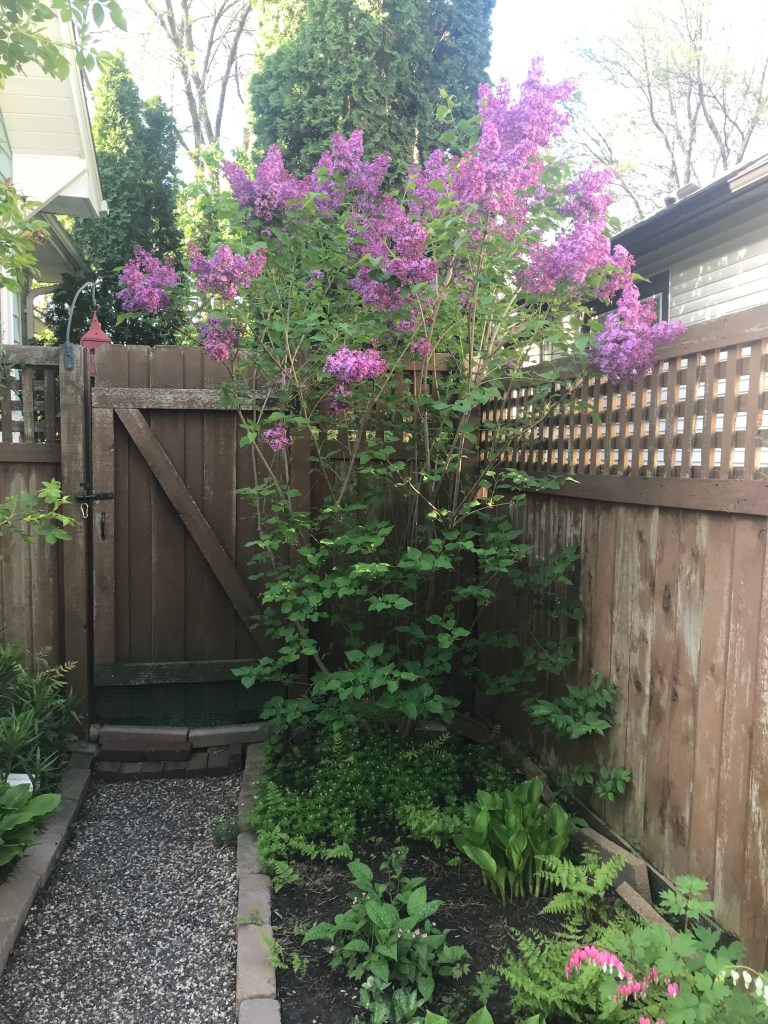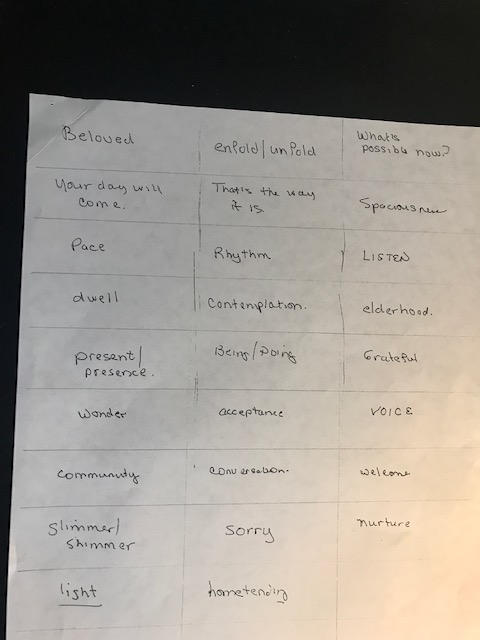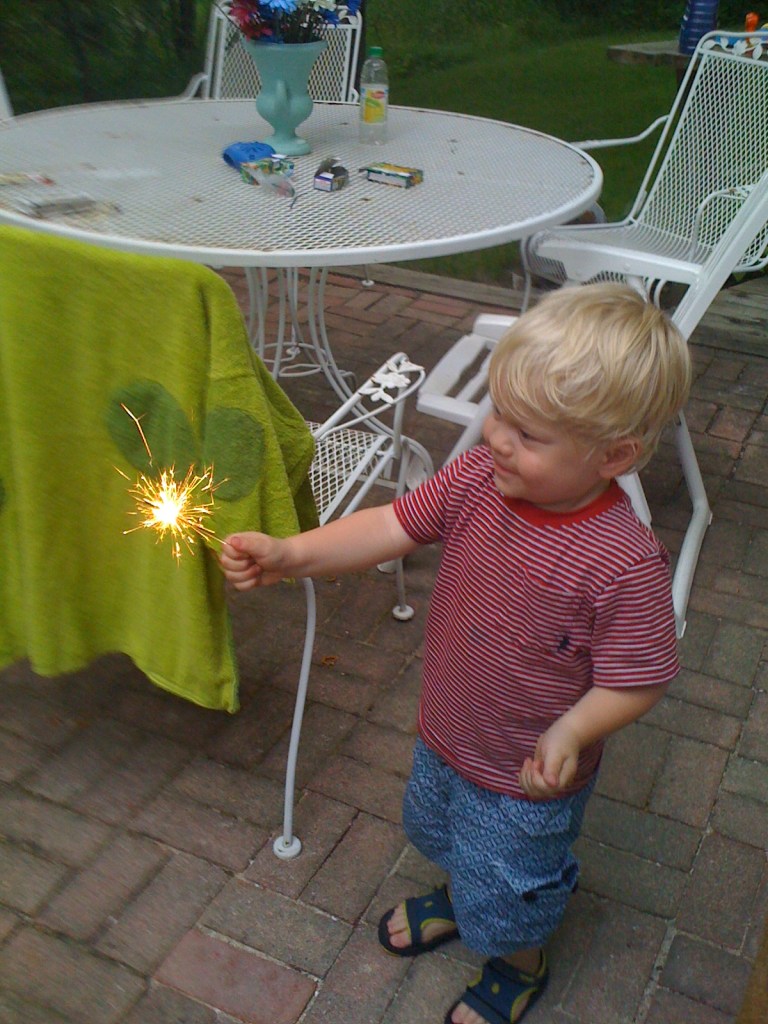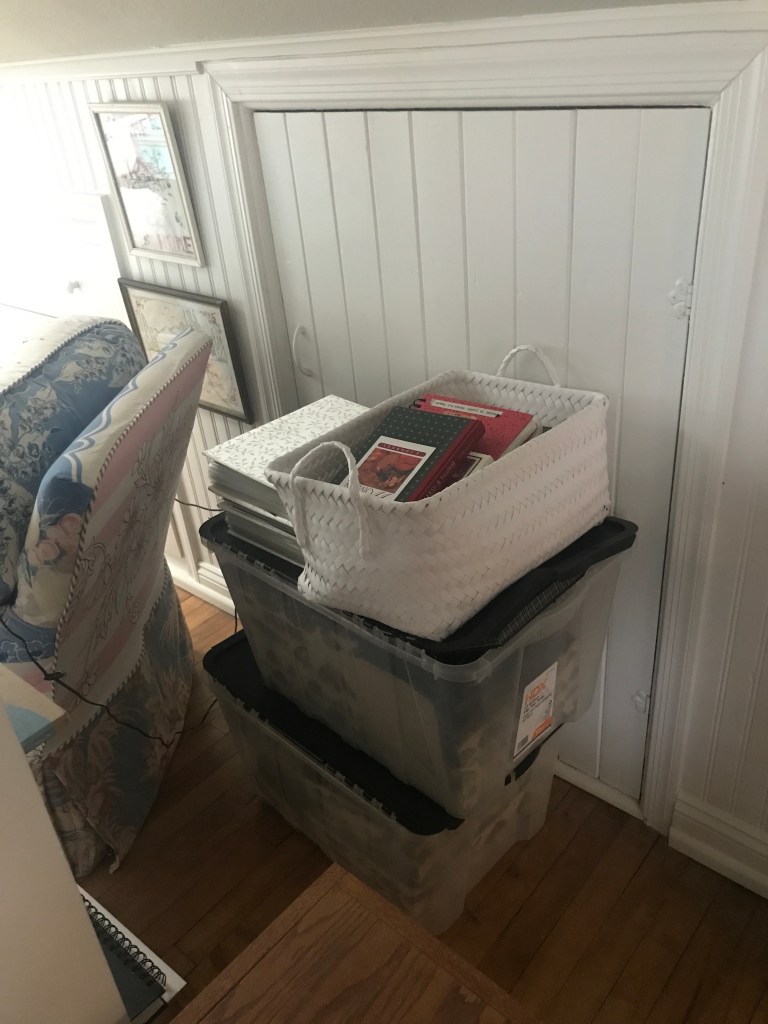May 14, 2024

Wednesday evening we returned from a road trip visiting our son and daughter-in-love in Cleveland and then a few days roaming in Michigan. A good trip, for sure, but oh, how wonderful to open the front door of our home and proclaim to the House Gods, “We’re back.” That was at 6:00 pm and by 7:00 we had unpacked, bags put away and washing machine chugging with our dirty laundry.
We are good returnees. You see, for us being home is even better than returning home.
My husband and I are homebodies. No doubt about it.
My husband hometends–or should I say garden tends–and he has been communing in the garden most daylight hours since our return. He also hometends for others when he paints discarded furniture, giving each piece a new and even more creative life. In June he will have his annual garage sale, the fruits of his winter labors, and all proceeds go to support Lutheran Social Services programs for youth experiencing homelessness.
I’m the interior hometender —hometending as a kind of spiritual practice, which I have written about before in this blog. How glad I am that before we left on this recent road trip I pushed myself to leave the house “return ready.” I’m not quite the perfectionist, however, as a friend who vacuums herself out the backdoor into the garage when she leaves on a trip, but I do like knowing that a clean and welcoming home waits for me when I cross the threshold. Besides, there is always enough to do upon returning without needing to clean the bathroom.
I have also realized over the years that my work as a spiritual director is a kind of hometending, too. I help others know the home within; the home always available. That’s a subject for another post.
Reflections Upon Returning
Being away from home opens space for new thoughts and clarifying realizations, which sometimes crystallize once the bags are unpacked. For example, on this trip we discovered that we enjoy roaming on the way to a destination–in this case, our kids’ home–but as we head back towards home we just want to get home. Be home. We will remember this the next trip.
I also realized that even though we lived In Cleveland for 14 years ourselves, going there now is no longer about returning to where we once lived, but visiting where our kids live. This is their home, and we are their guests, enjoying Cleveland through their eyes and hearts. That feels like a shift.
Resuming Routines
The morning after our return my husband worked in the garden, and I grocery shopped and did a variety of other errands. Our normal routine is for each of us to do our own thing during the day, sharing the day’s events and thoughts with one another at suppertime. That works for us, and we eased right back into that pattern.
At the same time we are not quite the same people we were before we left on this road trip. Road trips change us, even if those changes are not immediately recognizable. We now hold new memories. We are now more aware of who we are now and what we most need to live fully right now. We bring deeper gratitude to these days, whether they are ones on the road or ones at home.
It is good to be home.


An Invitation
What are your routines when you return home? I would love to know.

















